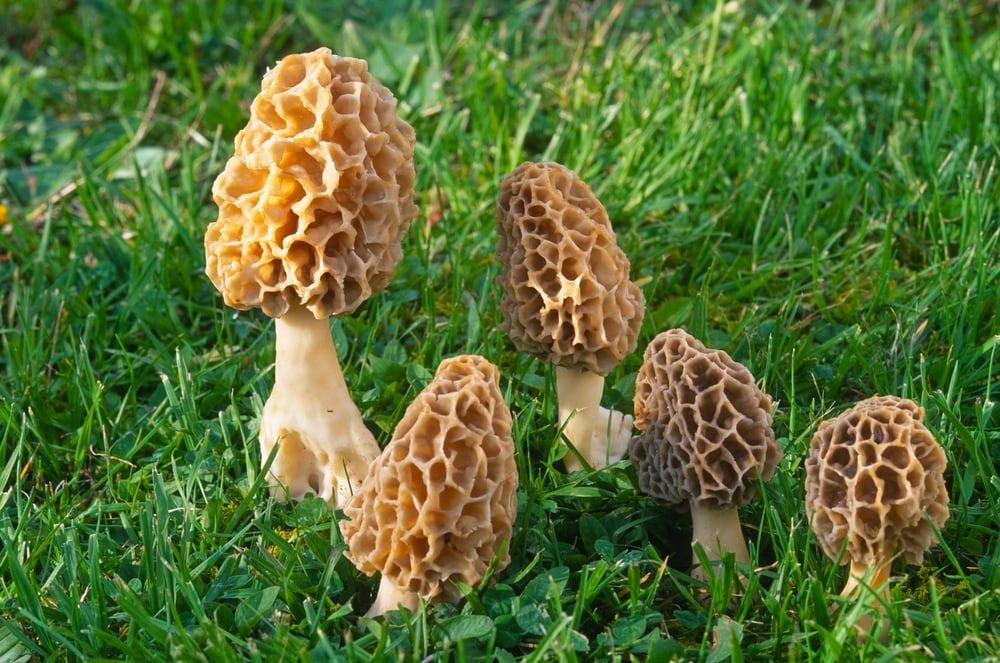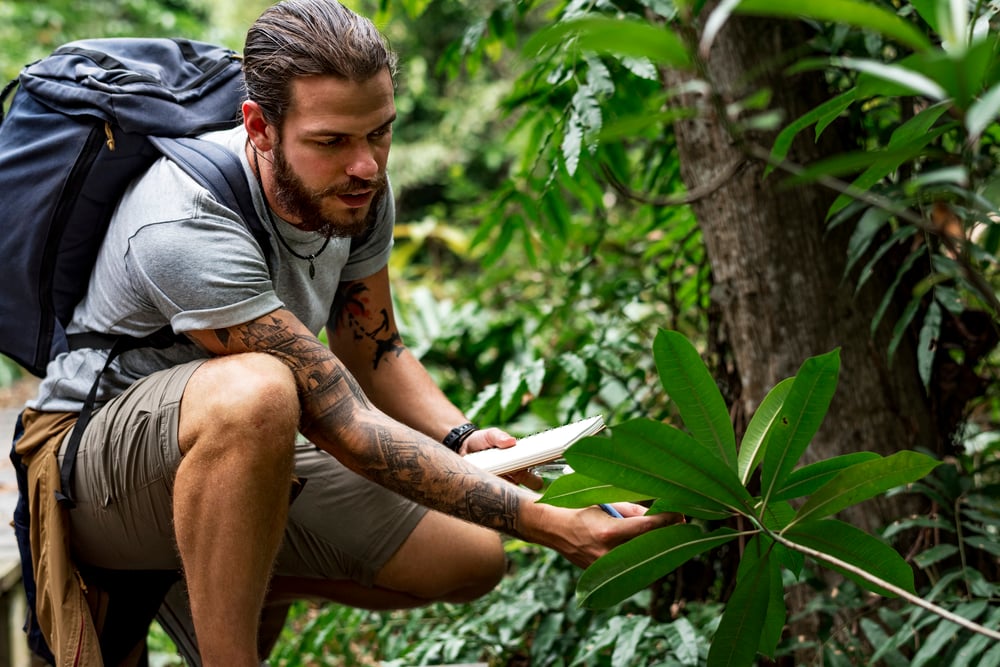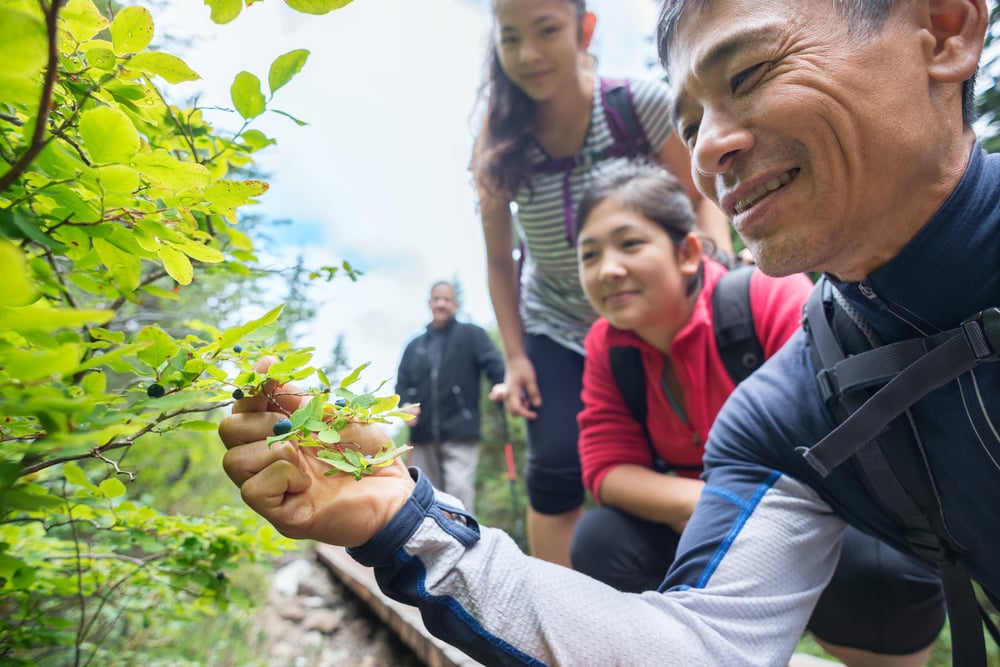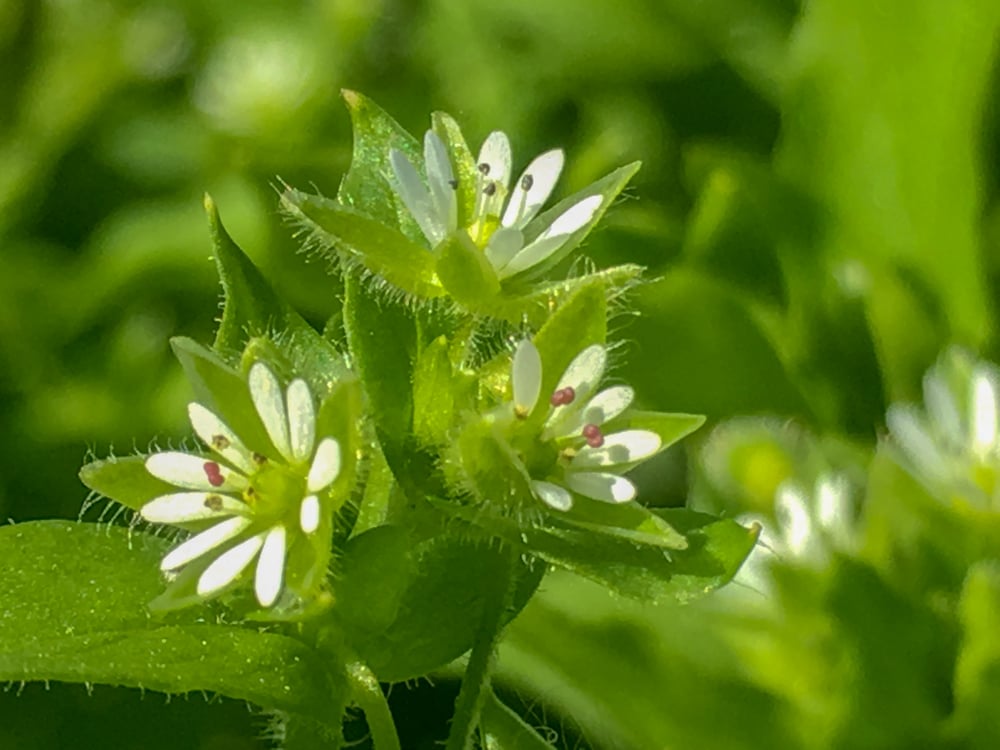Hunting wild edible plants can be as rewarding as hunting for wild animals. Plus, wild plants are healthy additions to your diet; they’re nutrient-dense, organic and delicious. Commit to learning a few plants each season and you’ll soon have a working knowledge of the edibles in your landscape.
Towards the end of an uneventful day of turkey hunting last weekend, I stumbled onto another type of forest bounty altogether: a tiny patch of mushrooms, growing up through bright green moss. I practically shrieked at my partner, who turned around and confirmed it: “yep, those are morels.”
 Ordinarily not a mushroom enthusiast, he was as excited as I was to pluck them. That night we lightly breaded and pan-fried the morels; and I felt the same wild-food thrill I had when braising my first squirrel harvest last year.
Ordinarily not a mushroom enthusiast, he was as excited as I was to pluck them. That night we lightly breaded and pan-fried the morels; and I felt the same wild-food thrill I had when braising my first squirrel harvest last year.
The mushrooms were fresh and woodsy, easily one of the best wild foods I’ve tried.
I’ve casually looked for morels before in abandoned orchards; they’re supposed to grow at the bases of dying apple trees. When I never found any, I gave up, thinking I was looking for a needle in a haystack. But my recent mushroom luck has me eager to give it another try --- and with more focus and determination this time, too.
Hunting wild edible fungi and plants deserves every bit of the obsession we give to hunting wild animals. Hunters don’t wander aimlessly and give up if the animal doesn’t present itself.
I got lucky when I stumbled upon the mushroom patch, but if you really want to have consistent foraging success, you’ll need a thoughtful plan.
So how do you make a plan if you’re new to the foraging game? We asked Green Deane, foraging instructor and founder of eattheweeds.com for his best beginners tips. Read on to get started with this rewarding hobby.
Choose one plant to focus on
One problem Deane sees with beginners is that “instead of looking for specific species they try to have every plant they see identified. As only a few wild species are edible it is a much better use of time looking for those specific species rather than trying to identify the vast majority --- perhaps 95% --- which are not edible.”

Instead of going outside hoping to find a variety of edible plants, Deane suggests beginners decide on a plant to search for and find its habitat during the plant’s prime season.
Where he lives in Florida, he knows to look on roadsides and trail edges in October for persimmons. And during winter, he looks for western tansy mustard in dry, corral or pasture-like settings.
“Foraging, which is treasure hunting for adults, is very much like dating: Knowing where and when to look is helpful,” he said. “The easiest thing to do is find out what is in season in your area now, go looking for it, and do that once a month. […] If you learn one or two a month you’ll have a good foundation and quickly, too.”
Take basic safety precautions & follow the rules
Carefully study the plant you’re hunting. Are there any toxic look-alikes? Make sure you can positively identify the plant before eating any part of it.
Also make sure you understand the plant in terms of its edibility. Some plants are only safe to eat in small quantities, for example, or once they’ve been cooked.
“The biggest mistake beginners make is trying to make a plant fit a description,” Deane said. “I take botanists to task often, but usually their descriptions are accurate (though I can think of exceptions.) But if they say the leaves have a notch in the end and your leaf does not, you are probably wrong --- not the botanist.”
In the case of my morel mushrooms, I was fairly certain I knew what I was looking at. But to be absolutely sure, I checked a Michigan Department of Natural Resources guide and compared my mushrooms with the look-alikes.
Deane says another good safety measure is to work with a buddy.

“If you and a friend study and look for plants together you probably won’t make the same observational mistakes. Working as a team adds a measure of safety,” he said.
It’s also best to avoid areas that may have been sprayed with pesticides or other harmful chemicals. You may even want to start with your own land until you build your confidence as a forager.
Many state and federal parks and forests are open to foragers, but some require permits. Check local regulations before accessing plants on public land.
It’s also best not to over-harvest an area. Take only what you will use and leave enough of the plant that it can regenerate itself and is available for wildlife.
Some good “weeds” for beginners
Violets
Violets’ small flowers are one of the first signs of spring in many areas and are available throughout the season. Many species in the genus Viola are edible –-- both the flowers and the often heart-shaped leaves. The flowers are candied or eaten in salads. The leaves, often described as peppery or spicy, are a nice addition to spring salads and sandwiches.
Juliet Blankespoor of the Chestnut School of Herbal Medicine recommends that foragers research the violets that grow in their local area to determine edibility as there are more than 500 species of violets. She writes that violets contain many beneficial nutrients including soluble fiber, Vitamins A and C, and rutin, which has antioxidant and anti-inflammatory properties.
Ground ivy
Most often referred to as “creeping Charlie,” a lawn and garden nuisance, Glechoma hederacea, or ground ivy was used as a flavoring agent in beer before the introduction of hops. Ground ivy is in the mint family, and is a perennial herb that grows in mats. The plant grows upward when flowering and produces tubular blue-purple blossoms. Look for this plant at lawn edges, fallow fields and other distrubed areas.
According to the U.S. Department of Agriculture, ground ivy is high in iron content and was used in Old English recipes for a variety of dishes including, “jams, soups, oatmeal and vegetable dishes.”
Deane recommends using the young, tender leaves as salad greens or in soups, and using older leaves as an herbal tea.
Chickweed

Chickweed, or Stellaria media, a favorite food source of chickens and other poultry, is often considered a nuisance in lawns and gardens. Described as a mild and tender green, chickweed is eaten raw in salads or lightly cooked –-- it pairs well with soups and is best when added during the last few moments of cooking.
Chickweed is a sprawling cool-season annual. The flowers are white and though they appear to have ten petals, if you look closely you’ll see that it’s really five; the petals are what botanists call “bifid” petals, according to North Carolina State University’s (NCSU) Extension Department.
To distinguish chickweed from look-alikes, pay attention to the tiny hairs that grow on only one side of the stem.
Chickweed thrives in moist soils in areas that have been previously disturbed. Look in your own yard and garden, as well as thickets, croplands and fallow fields.
According to NCSU’s Extension Department, the leaves contain saponins which are toxic but fortunately pass through the body without causing harm. Cook the leaves before eating if you have any hesitation about this as cooking breaks down the saponins.
Keep it simple and have fun
So that’s it: pick a plant or two that’s likely to be available in your landscape this season, learn what you can about it, and get started hunting!
Don’t eat anything you can’t positively identify. If you’re not sure, discard the plant or consider reaching out to an expert for help.
Enjoy the process of learning a plant or two at a time which Deane says will ultimately guide you to more success than the shotgun approach. And be sure to tell us what you’re hunting (and eating!).
For more foraging and wild food inspiration, check out these articles:
https://rethinkrural.raydientplaces.com/blog/infographic-the-health-benefits-of-eating-wild-turkey
Sources:
https://chestnutherbs.com/violets-edible-and-medicinal-uses/
https://plants.usda.gov/plantguide/pdf/pg_glhe2.pdf
https://plants.ces.ncsu.edu/plants/stellaria-media/
























